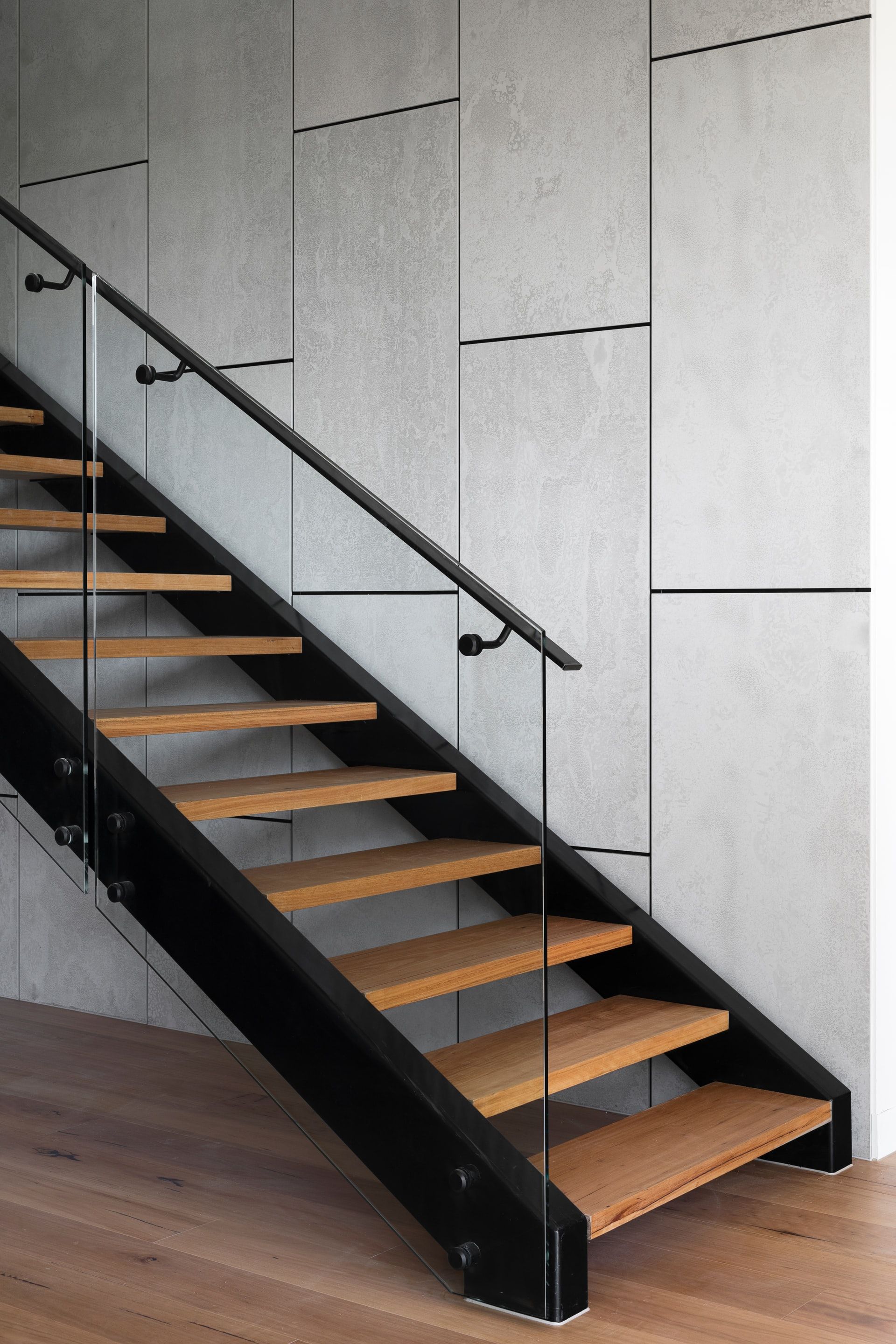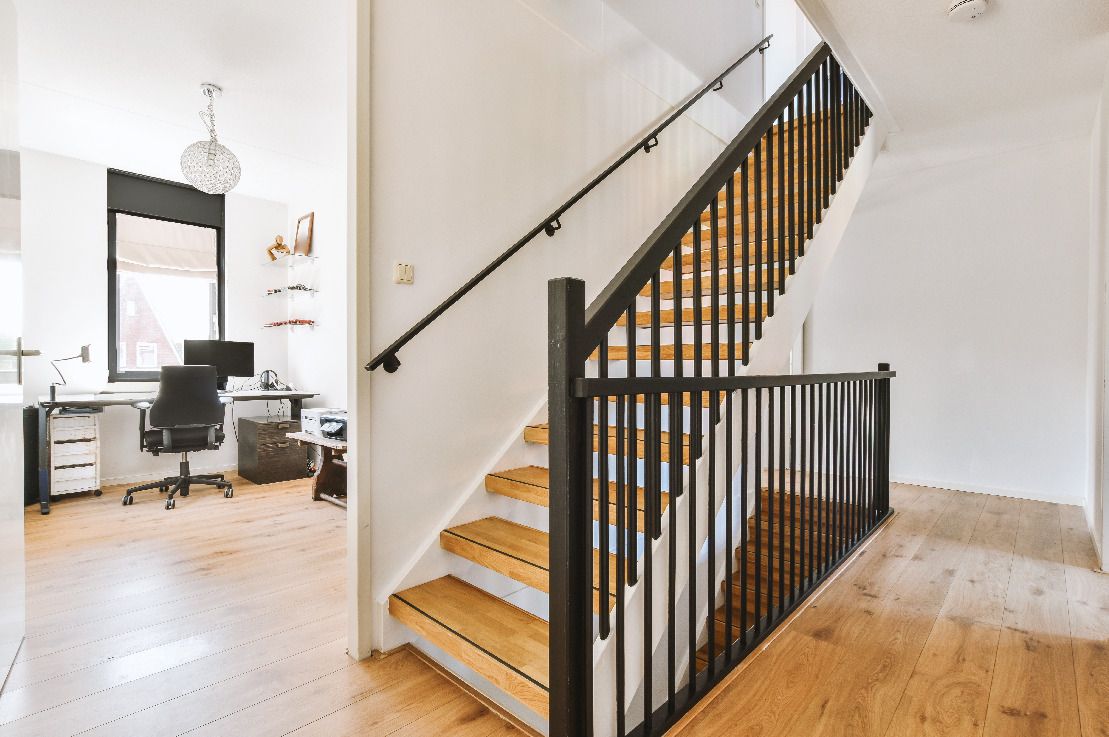Although stairs can be made of other materials, such as wood or stone, concrete and steel are most commonly used for industrial and commercial stairs. In this article, we will look at the similarities and differences between concrete and steel stairs.
What is the difference between concrete and steel stairs?
The difference between steel stairs and concrete stairs is, of course, the base material from which they are made. Steel stairs are primarily made of steel, while concrete stairs are made of concrete.
Steel stairs are generally lighter, stronger and more flexible than concrete stairs.
Steel is an alloy consisting of iron, carbon and other materials. Steel used for stairs is often electroplated with a durable zinc coating to prevent corrosion. Very often stainless steel, which is naturally corrosion-resistant, is used for stairs.
Concrete consists of three ingredients: water, aggregate (sand or gravel) and powdered cement. Cement acts as a binding agent when mixed with water and aggregate, which hardens when poured to form concrete.
Steel stairs are a popular indoor solution - in homes, businesses and industrial facilities. Steel can also be used for outdoor stairs, especially if galvanized or stainless steel is used to build them.

Concrete stairs vs. steel stairs - strength and durability
Both concrete and steel stairs are strong and durable. Steel is the most durable material for building stairs. Steel stairs have high tensile strength, which means they are resistant to damage under stress. Galvanizing steel to resist corrosion increases its durability, especially in outdoor environments with extreme weather conditions. Steel is nearly five times stronger than concrete and can withstand heavy loads. Steel stairs are stronger than concrete stairs, and can be built with much less material.
Concrete has a high compressive strength, but does not have the tensile strength of steel.
Concrete stairs are resistant to heavy loads and impacts. In addition, concrete is fireproof, so it is often used in fire staircases. Concrete absorbs vibrations and is effective in soundproofing, making it ideal for stairwells in hospitals and schools. Concrete can retain heat, making it easier to heat stairwells and reduce heating costs.
In some cases, steel and concrete are combined to create stairs that take advantage of the benefits of both materials. Steel stairs with concrete treads are often used in commercial and residential buildings. Steel stair construction provides unmatched strength, while concrete treads can be used to reduce noise, provide fire resistance and reduce heating costs.

Concrete stairs or steel stairs - design
When it comes to aesthetics and staircase design, steel is the clear winner over concrete construction. Not only is steel strong and durable, but it is also a flexible material that can be shaped into various patterns. Today, especially in homes and offices, steel stairs are seen as modern and contemporary. In addition, steel stairs can be designed with open steps to let in more light and make the environment look more spacious.
Concrete stairs are usually more functional than aesthetic. They fulfill their primary function when they are located outside or in hidden parts of a building, such as a garage or basement, but they are increasingly rarely installed in the main parts of buildings or in living areas. Almost any type of staircase can be made of concrete. However, the quality of the concrete used to build stairs depends on the temperature, consistency, mix and experience of the contractor. In addition, concrete stairs are difficult to cast or form with great accuracy.
Steel stairs vs. concrete stairs: which is easier to maintain?
Both steel and concrete stairs are easy to maintain. Steel stairs require little maintenance. Steel outdoor stairs can be galvanized to prevent rust and corrosion. They can be cleaned with a pressure washer. If the steel is powder-coated, it is best to use a mop or sponge to avoid damaging the protective coating.
Like metal stairs, concrete stairs are also easy to maintain. Interior concrete stairs simply need to be wiped down with a mop to remove any dirt. Exterior concrete stairs can be safely pressure washed to remove dirt and other deposits without risking damage to the concrete.
Price of steel stairs vs. price of concrete stairs
The price of steel stairs is generally lower than that of concrete stairs. First, steel is a material that is relatively cheap to produce. Second, lower labor costs contribute to the lower price of steel stairs. Steel stairs take less time to build than concrete stairs. All elements of steel stairs can be made and delivered as ready-to-assemble components. Ready-to-assemble elements reduce assembly time and keep labor costs low.
Concrete stairs are more expensive than steel stairs due to the high labor costs involved in their construction. Constructing a concrete staircase requires preparing the formwork, placing metal rebar, pouring the concrete, and then finishing and curing it. This process is time-consuming, making concrete stairs more expensive to build than stairs made of steel.
Steel stairs vs. concrete stairs: environmental impact
Both steel and concrete are extremely durable building materials. Steel is 100% recyclable, with a recycling rate of more than 90% worldwide. Steel can be reused many times without loss of strength or durability. Concrete can be crushed for reuse in new mixtures, making concrete and steel stairs equally environmentally neutral.
What is better steel or concrete stairs? Our conclusion
The winner is .... steel. Although both steel and concrete stairs are easy to maintain and durable, steel stairs have many advantages over concrete stairs.
Concrete is strong and durable, withstanding heavy loads and impacts, but steel is almost five times stronger.
Steel construction also wins in terms of aesthetics and stair design. Steel stairs are modern and sophisticated, and can be made in almost any shape, while concrete is simply boring.
Perhaps the most important advantage of steel stairs is their lower cost. Concrete stairs are extremely labor-intensive and therefore much more expensive to build.
In most cases, steel stairs are the ideal solution for any industrial, commercial or residential facility.
All posts from category "Stairs"




